A white Chevy Silverado sits in the driveway of a suburban
street in Anaheim, California. Trucks just like this one
sit in thousands of driveways every day — but maybe none
are as special as Alejandro “Nene” Silva’s.
The truck is a time capsule that chronicles the history of Nene and Vanessa Silva. The ride to a local baseball diamond for first dates. The late-night drives and intimate talks. The spontaneous road trip to Las Vegas to get married in 2016.
Nene Silva will never drive the truck again. He will never see the truck again.
In the fall of 2019, a few months before the pandemic, Nene Silva became blind after years of undiagnosed diabetes, joining an estimated 61 million U.S. adults living with a disability.
“I think the whole world was anxious when the pandemic hit,” Nene Silva said. “And I was, like, man, I lost my vision. And I was very anxious, frustrated with life at first.”
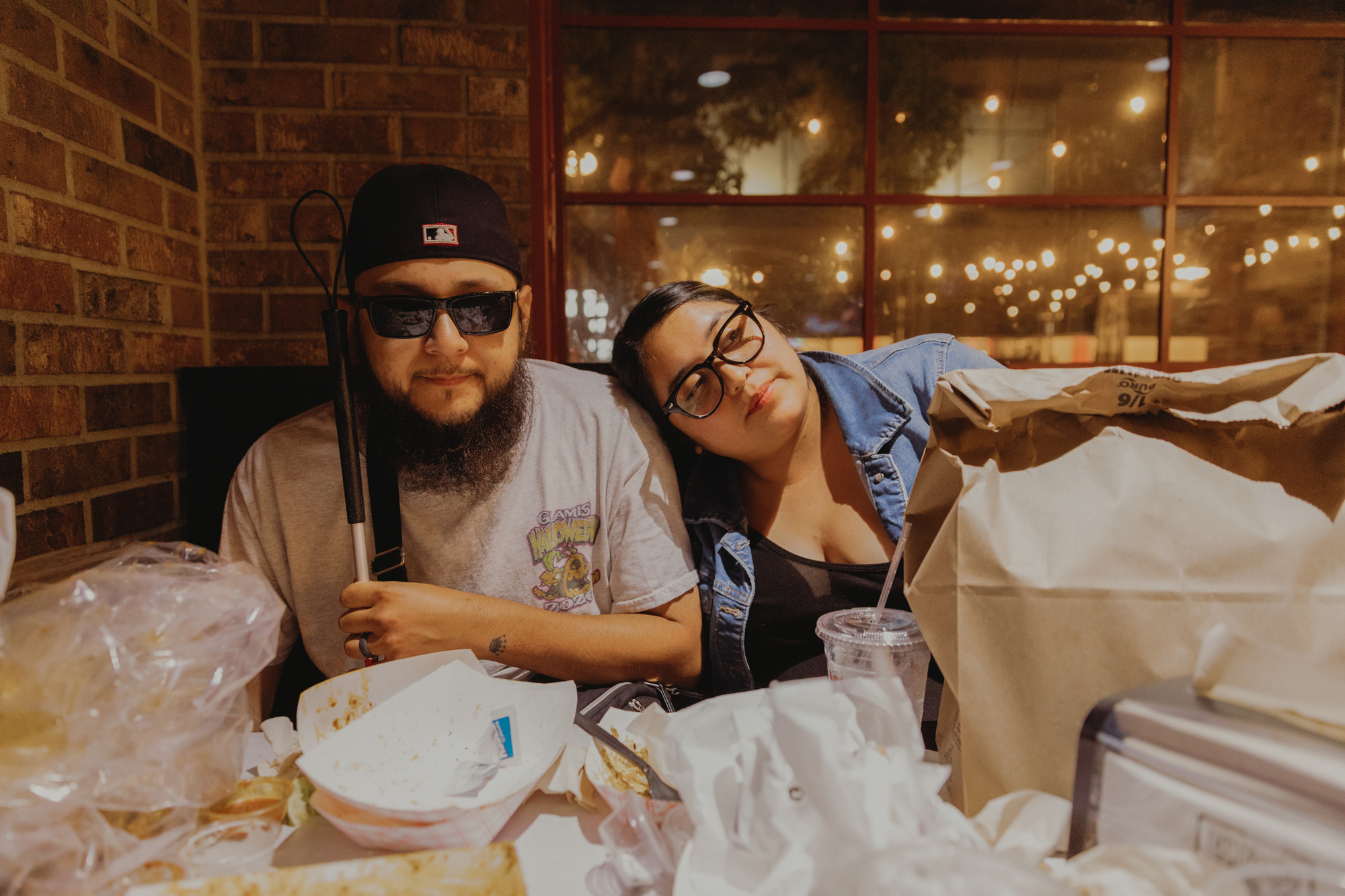

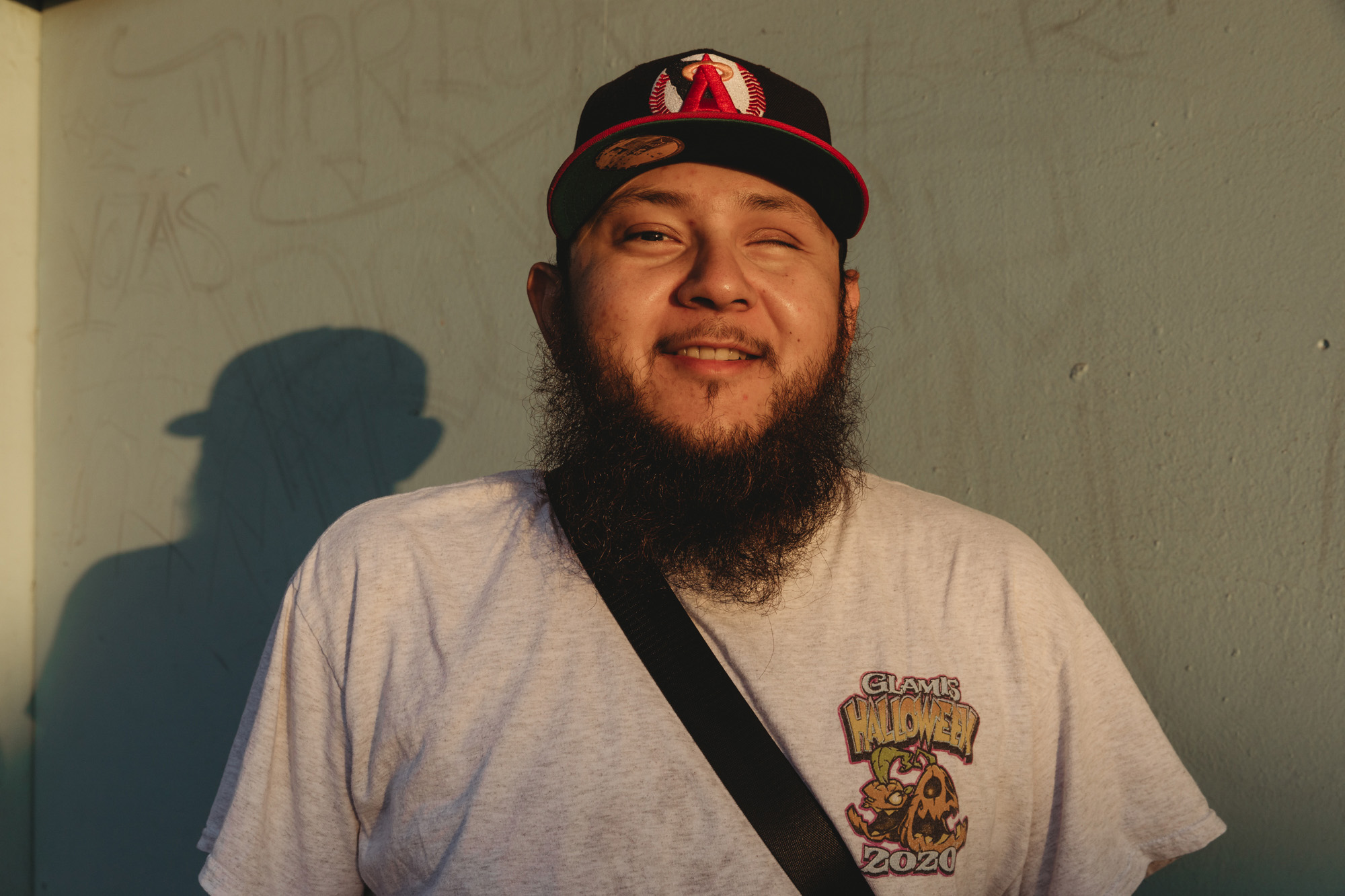
Left: Nene Silva and his wife Vanessa enjoy a seafood dinner at the Crawfish Cave in Anaheim, California. Center: The Silvas watch fireworks from their Chevy Silverado in Anaheim, California. Right: Nene Silva poses outside his home in Anaheim, California. Silva became blind following years of undiagnosed diabetes that resulted in retinal detachment. (Jessica Ruiz/News21)
In the months that followed, Nene encountered challenges for people with disabilities that have persisted for decades and were magnified by COVID-19 — inadequate benefits, low employment rates and wages and, generally, secondhand status for financial, social and emotional support.
People with disabilities make up about 12% of the workforce, but they account for more than 50% of those living in long-term poverty, according to the National Council on Disability. Members of the disabilities community are twice as likely to live in poverty as those without disabilities.
Fredric Schroeder, a former Rehabilitation Services Administration commissioner under the Clinton administration, lost his vision over the course of nine years. He said society dismisses those with disabilities — inattention that always simmers beneath the surface but bubbles over in times of crisis.
The attitude is “we’ve got to take care of the general population first, and then down the road we’ll get around to people with disabilities,” Schroeder said.
People with disabilities, already less likely to be employed than nondisabled people, were battered during the pandemic by a volatile job market. They were burdened with pre-existing issues like lower wages and were likelier to be front-line employees such as grocery store and customer service workers.
“People with disabilities are disproportionately employed in retail sectors or hospitality. Those have been really heavily impacted by COVID-19,” said Taryn Williams, managing director for the Poverty to Prosperity Program at the Center for American Progress. “They’ve seen some of the greatest loss.”
In 2017, the National Council on Disability found that only 32% of working-age adults with disabilities were employed, compared to 73% of those without disabilities.
According to the Bureau of Labor Statistics’ monthly Employment Situation data, the unemployment rate for workers with disabilities catapulted at the start of the pandemic, jumping from 8.3% in March 2020 to 18.9% in April 2020. For nondisabled workers, the rate increased from 4.4% to 14.3%.
There’s little data to show the financial impact on caregivers. Victoria “Tori” Snyder lives in the riverside borough of Baden, Pennsylvania, with her mother and 3-year-old son, Braxton Snyder, who has autism.
Snyder, who works as a small-business coach and runs a wellness website, lost income when the shutdown disrupted her son’s in-person therapy at his day care.
“I was losing five hours a week of pay because I had to do therapy with my son,” Snyder said.
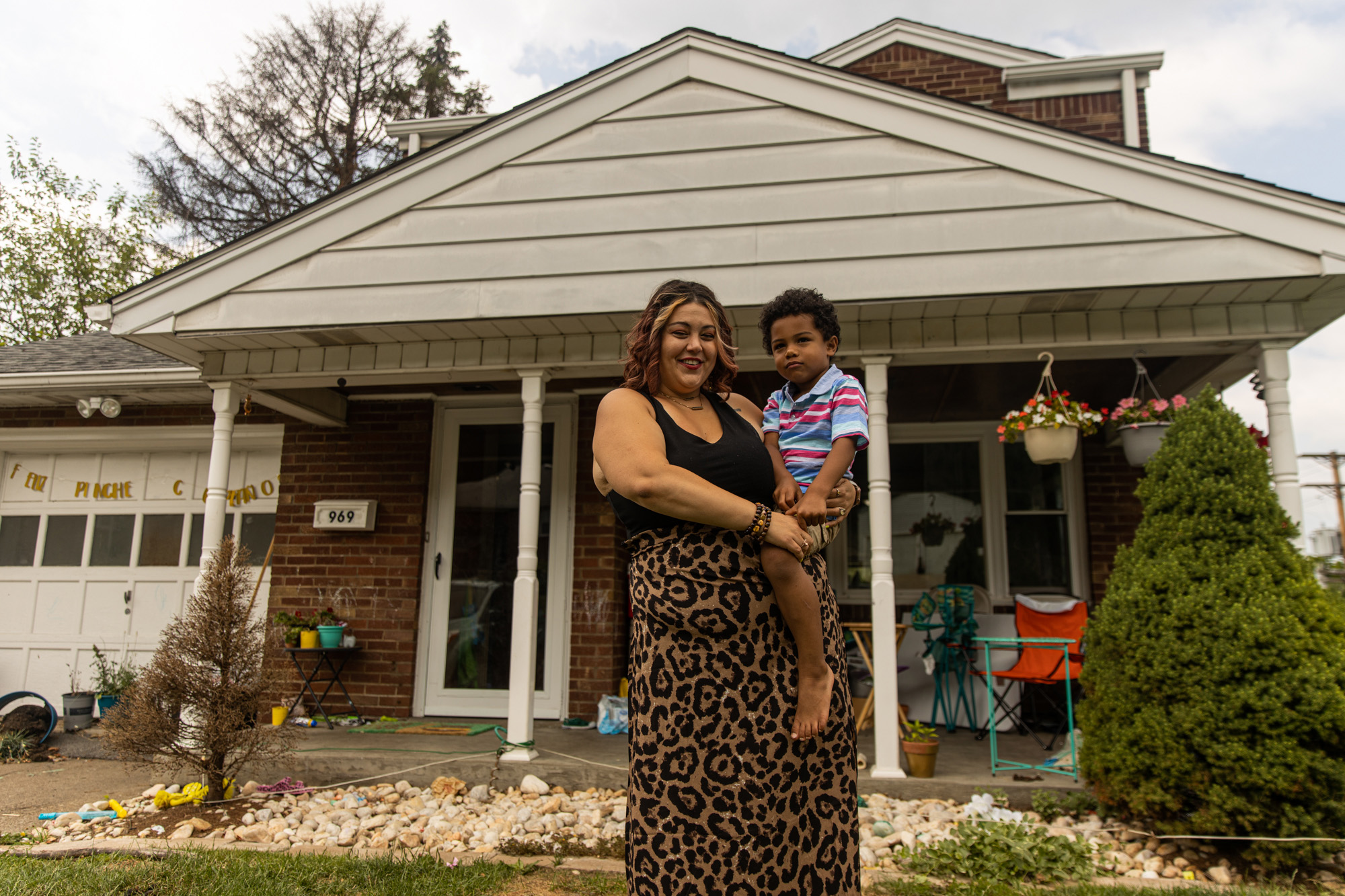
Victoria Snyder with her son Braxton outside their home in Baden, Pennsylvania. The pandemic led to the closure of his child care center and ended in-person therapy. (Maddy Kline/News21)
Workers with disabilities are more likely to be employed part-time and to work in service occupations, and they are less likely to work in management and professional positions, according to the U.S. Department of Labor.
Lisa Schur, a Rutgers University researcher who explores the relationship between disability and economics, said that people with disabilities often were stuck as essential workers.
“A lot of people had this terrible choice of, ‘I have a disability. I might have compromised health to begin with. Do I go in and risk my life or do I lose my job?’” Schur said. “So that was a really terrible situation for a lot of people.”
Robust federal programs, such as those from the Social Security Administration, usually offer a steady source of income to those who cannot work because of a disability. But advocates say the application process is arduous and lined with accessibility obstacles and complex, outdated eligibility requirements.
The pandemic only worsened the process when 1,230 field offices across the U.S. were shuttered in March 2020. The closures eliminated the option for in-person assistance — one that over 43 million people took advantage of in 2019, according to the SSA.
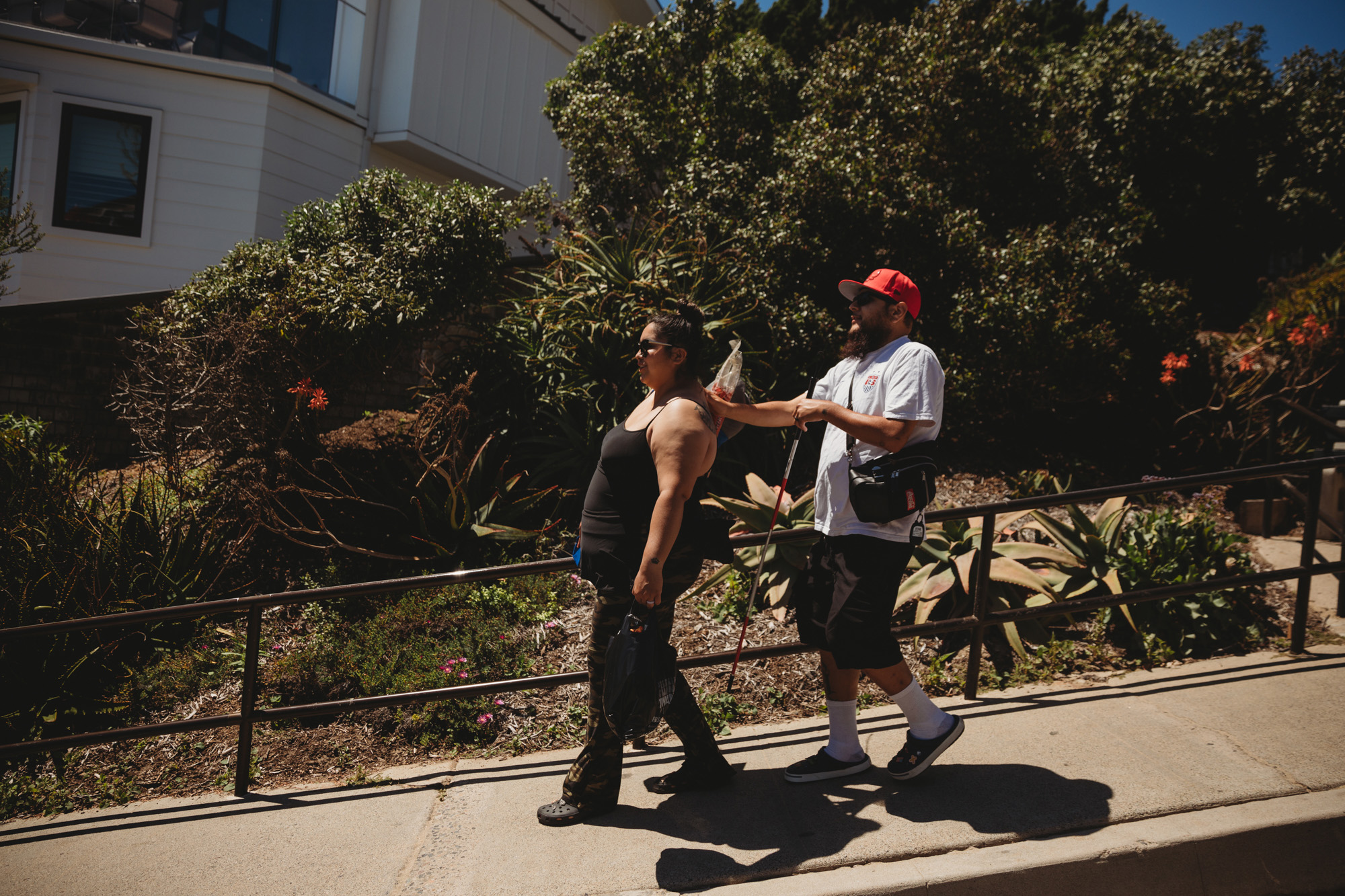
Vanessa Silva guides her husband, Nene, down a street in Laguna Beach, California. After becoming blind, Nene had to rely and trust Vanessa with many aspects of life, from walking down a street to applying for disability benefits. (Jessica Ruiz/News21)
Nene Silva stopped receiving state disability benefits in March 2020 — about $1,400 a month — with no notice, the Silvas said. That same month, Vanessa Silva was laid off, forcing them to fall back on her unemployment payments and savings.
The couple went nearly three months with no state disability payments, prompting them to turn to SSA, where they would eventually be approved for monthly payments of $1,500 in September 2020.
Nene Silva, who was laid off from a printing job before he went blind, was fortunate to have his wife to rely on in a process fraught with busy phone lines, inconsistent directions and the hope that she was doing everything correctly.
“I tried my best to kind of keep calm,” she said. “I tried to hold it in, but I think it did cause tension between us. I told him he had to learn how to trust me.”
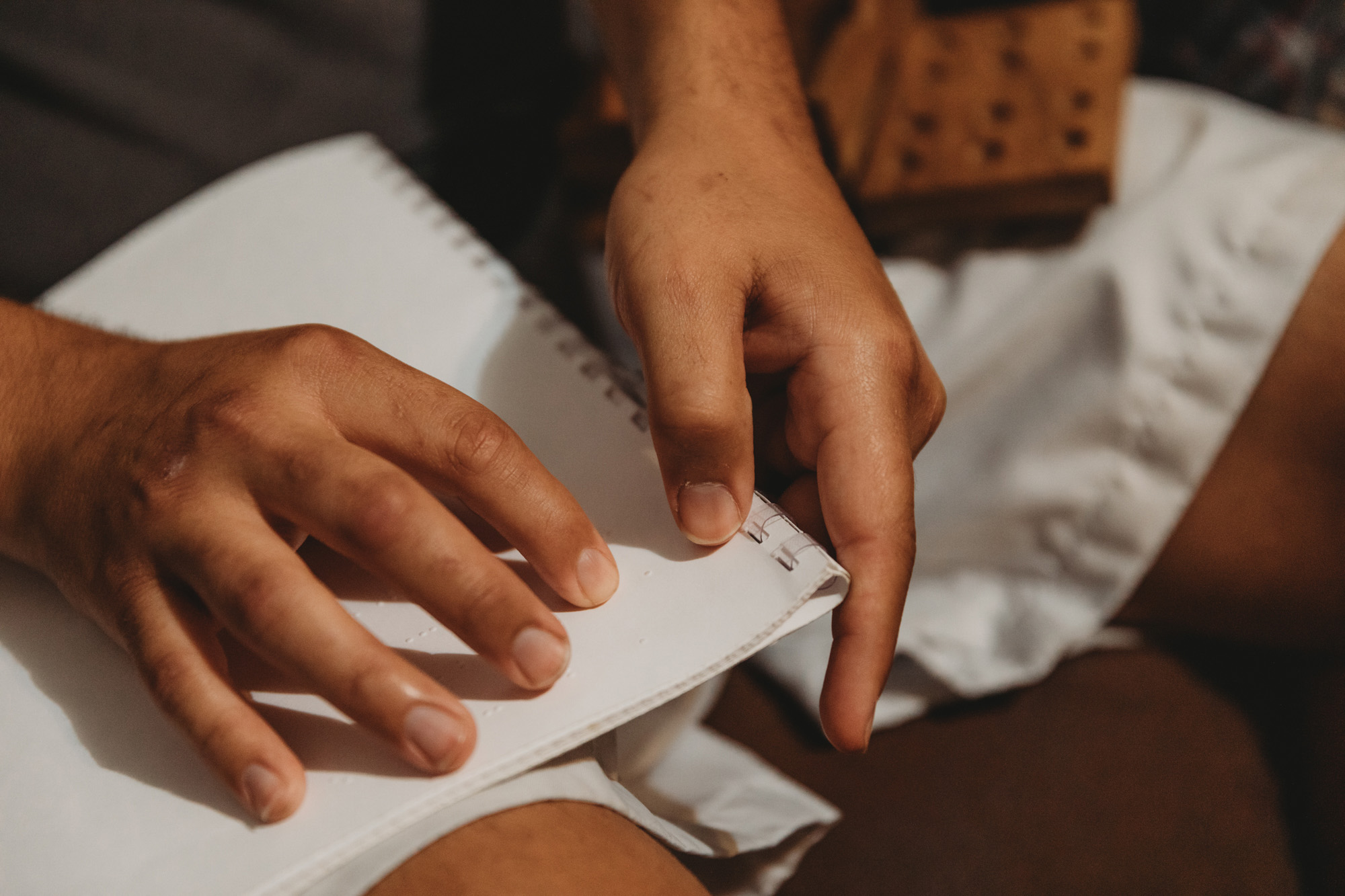
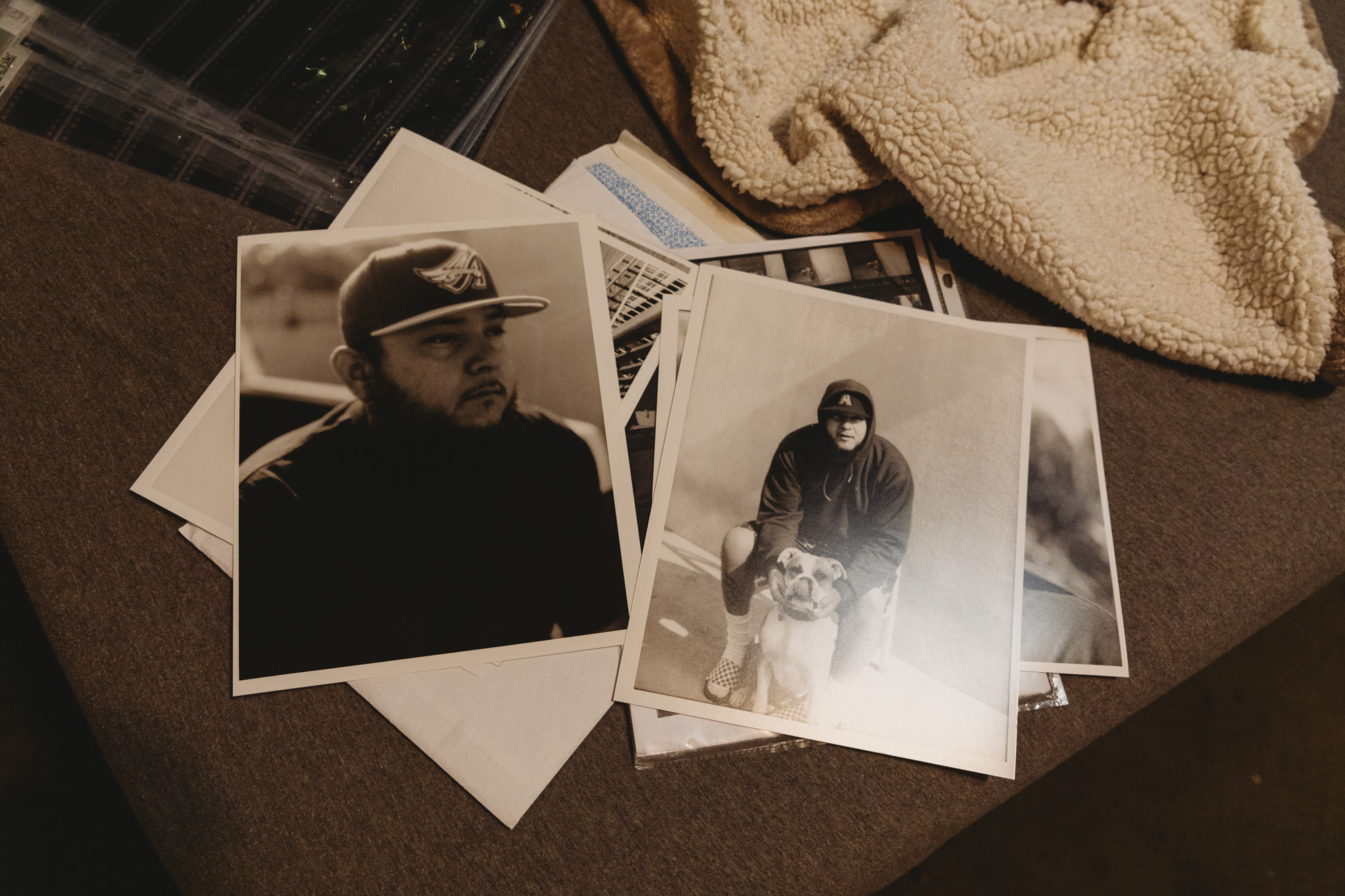
Left: Nene Silva takes mobility and braille classes at the Braille Institute in Anaheim. His classes are now taught remotely via Zoom and phone. Right: Images taken a few weeks after Nene Silva’s first retina reattachment surgery in the fall of 2019. The surgery failed, leaving Silva blind. (Jessica Ruiz/News21)
Even one field office closure ripples through a community. A 2019 study from the University of Chicago found that a single SSA field office closure reduced disability applications by 10%, especially discouraging those with low education and low-incomes.
As of early August, field offices remained closed to walk-in, in-person services. Kathleen Mullen, senior economist and director of the RAND Center for Disability Research, said that the pandemic has had an “unusual impact” on applications. Instead of rising as expected during a crisis, the number of applications stayed static, surprising economists.
“There could be a lot of people who would like to apply for benefits and they just haven’t been able to,” Mullen said. “The other is that to apply for benefits, you have to file medical records. People will probably be pretty scared to go to their doctor’s offices, or maybe they’ve had trouble accessing the hospital depending on where they are.”
Callum Zander, who was diagnosed with nonverbal autism, plays on the swing set at The Growing Tree Child Care Center in New Glarus, Wisconsin. (Jessica Ruiz/News21)
Social isolation was particularly poignant for people with disabilities, some of whom regressed in socialization and motor skills and others who ran into familiar barriers to inclusion as pandemic protocols eased. And the weight on caregivers increased.
Five-year-old Callum Zander, dressed in footie pajamas, runs from the living room to his mother in the kitchen, where she is cleaning up after her family’s chicken dinner. As Mackenzie Zander wipes the counter, he opens his arms and wraps them around her waist.
Hugs connect Callum, a child with nonverbal autism, to his family, peers and community. In March 2020 he was forced to adapt to a pandemic that didn’t allow for touch.
“I think whenever he would see anybody, he would want to hug them, and I think that’s detrimental to any child’s mental health,” Zander said. “I mean, not being able to physically touch people, even his grandparents. They would drive up our driveway and stay in their car. He would just lose his mind, because he wanted to be with them, you know?”
According to the Texas Medical Center, people can develop touch starvation when physical contact is limited.
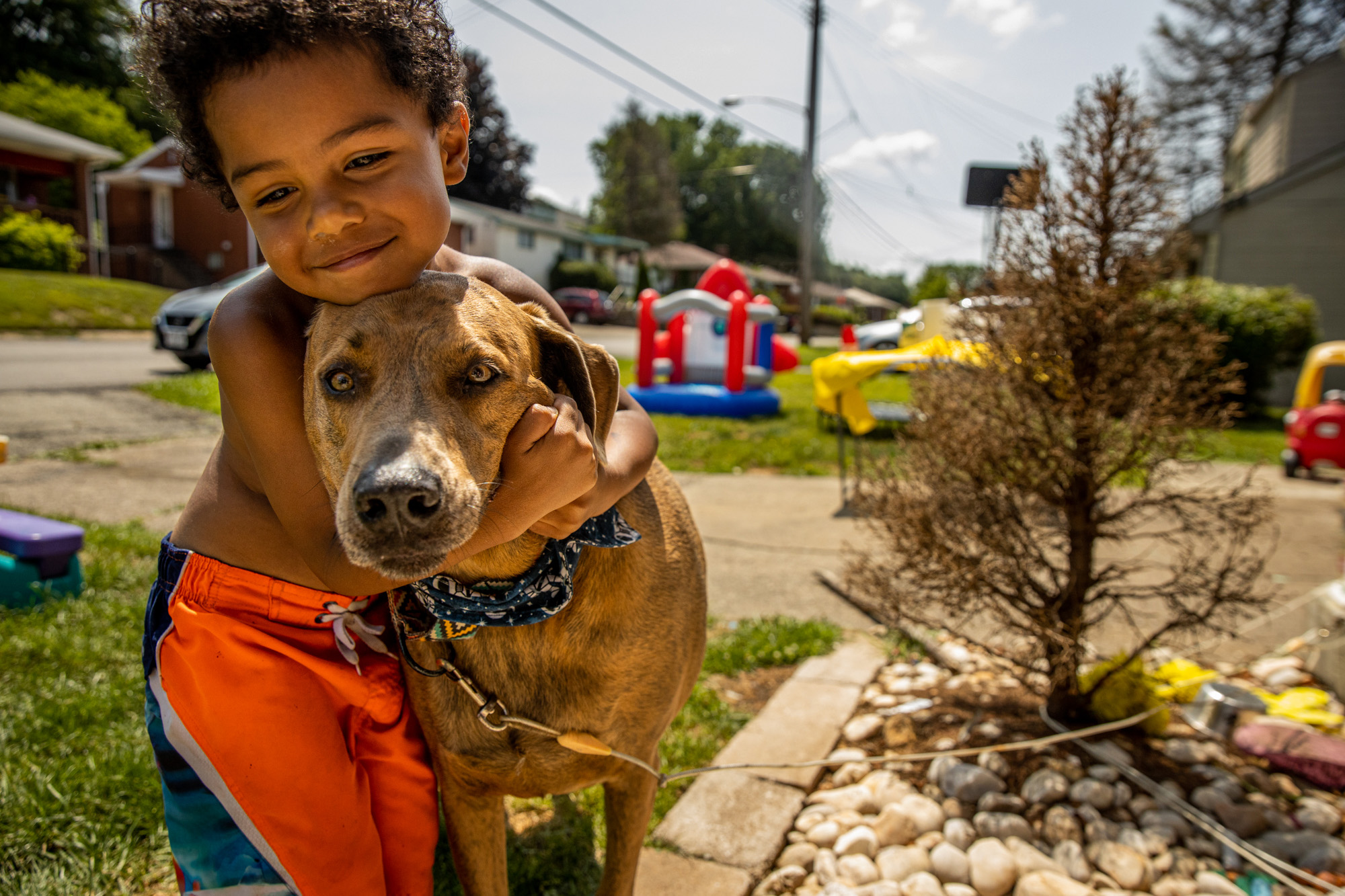
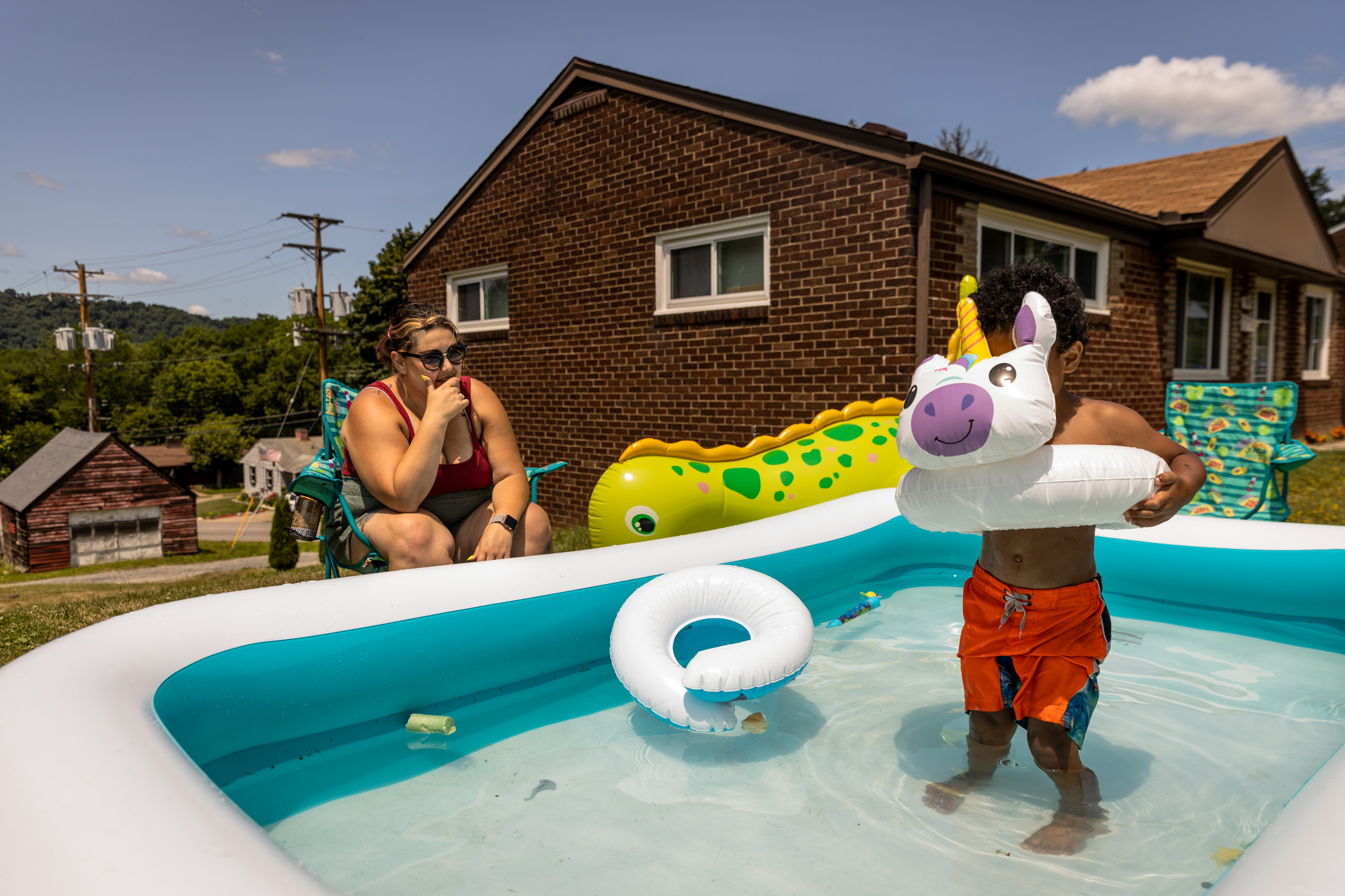
Left: Braxton Snyder with his adopted dog Tiger outside his home in Baden, Pennsylvania. Right: Victoria watches Braxton play outside their home in Baden, Pennsylvania. When COVID-19 shut down Braxton’s child care center, Victoria worked to provide crafts and learning activities for her son. (Maddy Kline/News21)
Tori Snyder tried to combat loneliness for her son by creating a world out of a street in Baden, a borough of Pittsburgh.
“His whole world was just this house, in this yard and a few blocks in our neighborhood,” said Snyder of her son Braxton.
During the pandemic, Snyder and 3-year-old Braxton walked for hours every week, taking a similar route each time from their home perched on the top of a hill. They’d stroll down to pick up fudge from Anderson’s Candies or a cone from Punks Ice Cream Shop.
“My anxiety is high. His anxiety is high,” Snyder said. “What was hard was because he had a little bit of a speech delay … He could not vocalize why he was scared, he was nervous or he was confused … It was so hard for the little ones to grasp what was going on. And behavior-wise, there was a big gap, a lot of battles, a lot of meltdowns.”
Forty-year-old Arthur Aston spent 35 days in his one-bedroom apartment in Collingswood, New Jersey, before he ventured out in the spring. Once he did, he was met with more barriers.
Restaurants that developed or expanded spaces for outdoor dining didn’t necessarily accommodate those in wheelchairs, said Aston, who was born with spina bifida and uses crutches, braces or a wheelchair.
“Who doesn’t like to be outside as much as they can, especially after a long winter?” Aston said. “But they kind of exclude us from participating without any malice or ill will. It’s just, ‘Hey, did you think about this?’ And it’s like, ‘No, you didn’t.’”
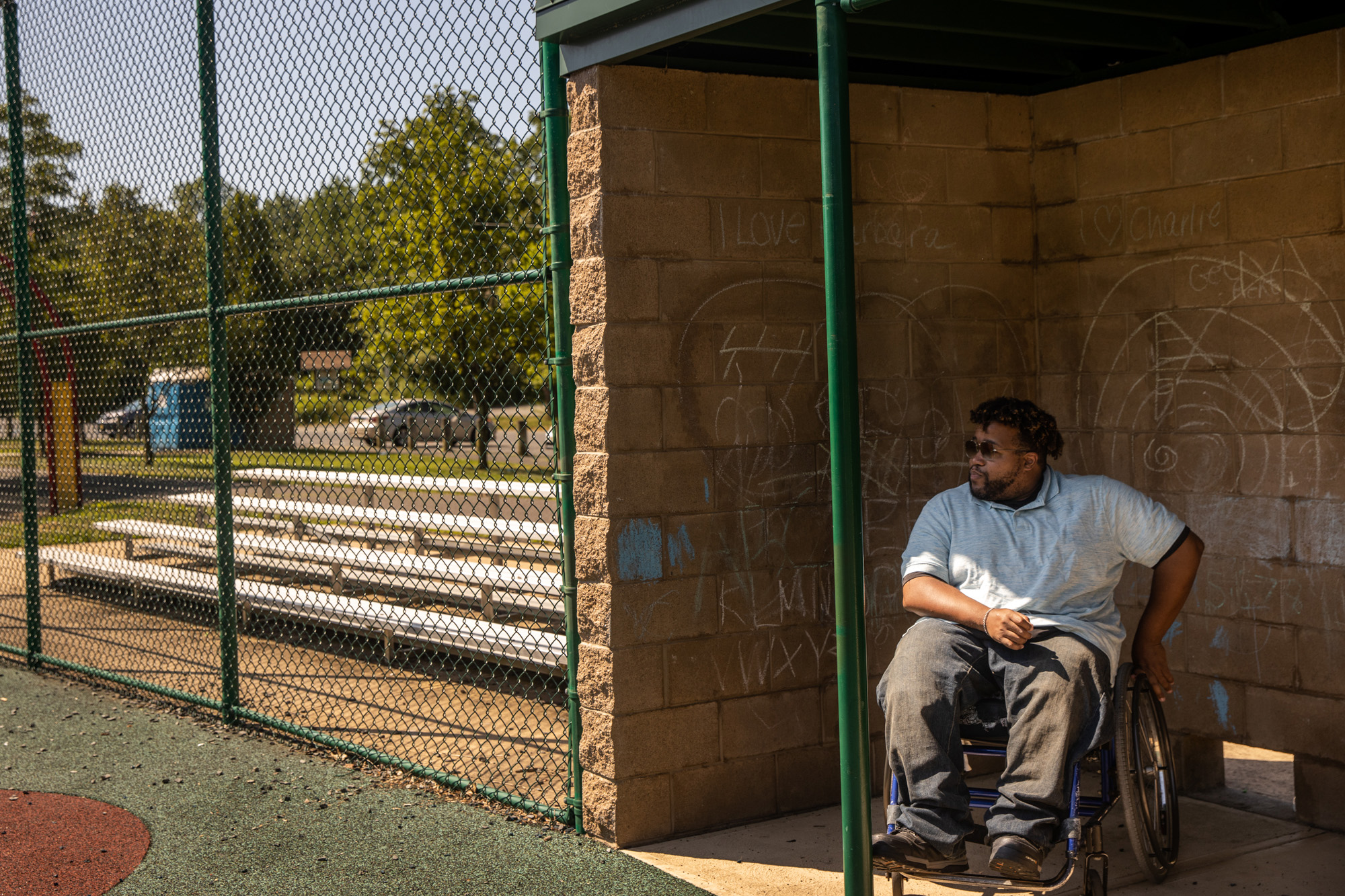
Arthur Aston sits in a dugout in Boundless Field in Cherry Hill, New Jersey. The field is used by the Camden County Miracle League, an inclusive baseball league for people with disabilities. (Maddy Kline/News21)
In a 2020 study by the National Institutes of Health, researchers found that nearly 63% of caregivers of children with disabilities expressed stress and anxiety during the pandemic.
Mackenzie Zander had to manage the chaos of life as a wife, parent and employee — juggling a slew of doctor’s appointments, the needs of a 2-year-old daughter and a son with autism, and her job teaching at a child care center.
“Having COVID hit and things like that, I just feel like it was one thing on top of another, on top of another,” Mackenzie Zander said. “Where I felt like I could handle it. I was like, ‘OK, I’ll be fine, it will be OK.’ And then I, eventually, just got to a point where I just wasn’t OK.”
One day in September, an hour late to Callum’s doctor appointment, she broke.
“I ran through these unfamiliar halls,” Mackenzie Zander said. “I’m just bawling, crying, and I remember getting to a stopping point of an overlook of the hospital and I was like, ‘I’m just going to jump off.’”
She checked into a psychiatric facility to get evaluated and was diagnosed with depression and anxiety. Since then, she has been going to virtual therapy once a week.
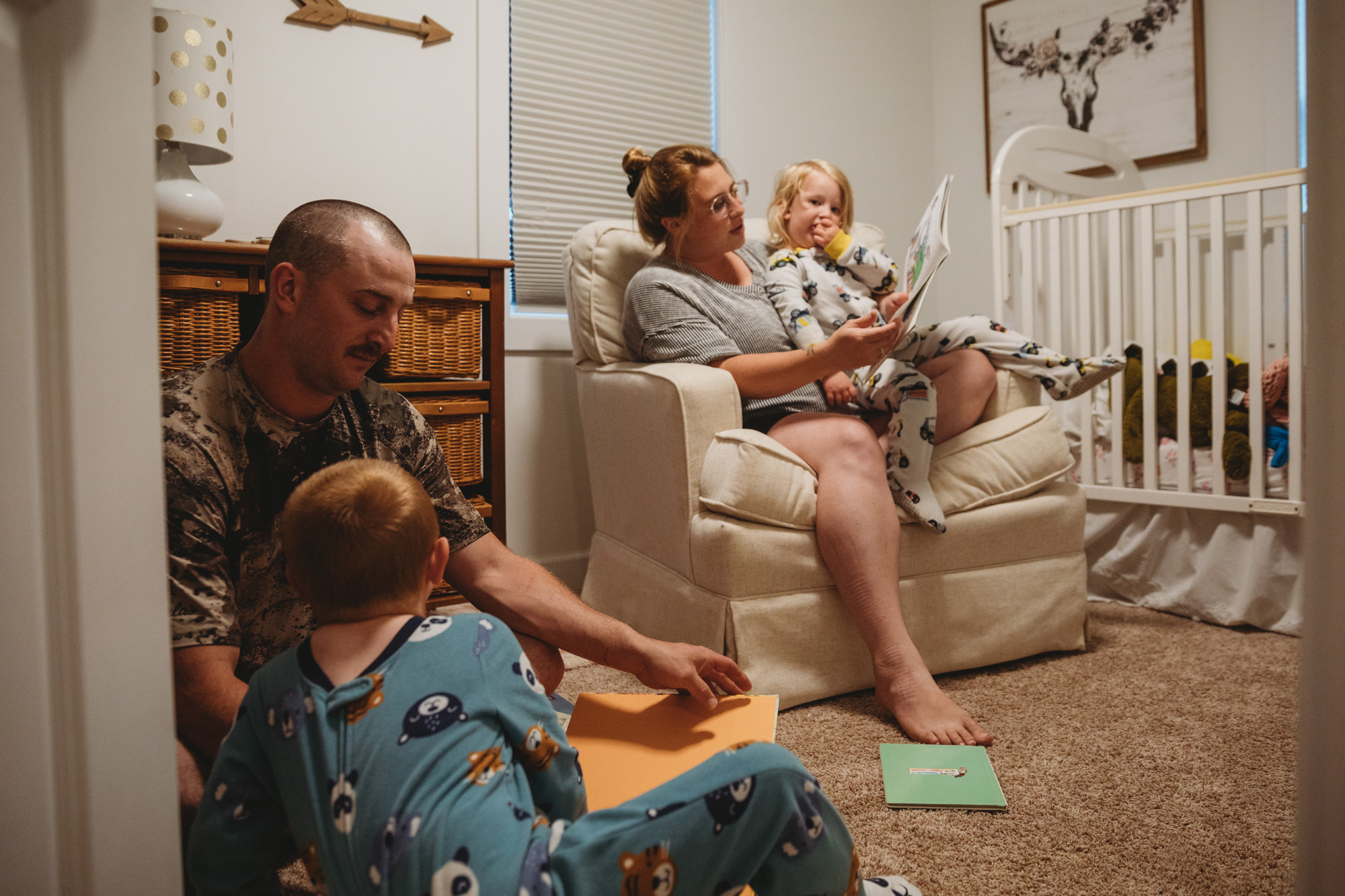
Nick Zander and his wife Mackenzie gather their children for reading time before bed in their home in New Glarus, Wisconsin. (Jessica Ruiz/News21)
Advocates say it’s unclear whether the lessons from the pandemic will improve the lives of people with disabilities and their families.
Nicole Jorwic, senior executive officer of state advocacy for the advocacy group The Arc, has lobbied for improved data collection on infection rates, vaccine allocation and policy implementation for those with disabilities during the pandemic. Organizations can’t prepare for the next crisis if they can’t get an accurate measure of the pandemic’s financial, social and emotional losses, she said.
“That’s the fundamental problem that we have in the disability service system, is we don’t have any universal data collection to show progress or lack thereof,” Jorwic said.
Tori Snyder said people with disabilities are not part of necessary conversations.
“We’re not ready for equity,” Snyder said. “We’re ready for diversity. We’re ready for a little bit of inclusion, but we’re not ready for equity. And that’s where I think the disabilities community or those differently abled are really suffering, because there’s not enough people advocating equity for them.”
The Biden administration has outlined a plan providing support in health, social, economic and educational sectors, meant to bolster equal access and opportunities promised in the Americans with Disabilities Act, enacted 31 years ago. It also offers a COVID-19 plan to “protect and support” those with disabilities during the pandemic.
“There’s actual staff in the administration, in the White House, that leads me to believe that we are in a moment where, hopefully, the disability community is a focus and not an afterthought,” Jorwic said. “Some people just don’t think about disability. I do think that, that’s starting to change, but it’s slow.”
If you or someone you know is in need of help, call the National Suicide Prevention Lifeline at 800-273-TALK (8255) or text 741-741 to connect with a trained crisis counselor right away.